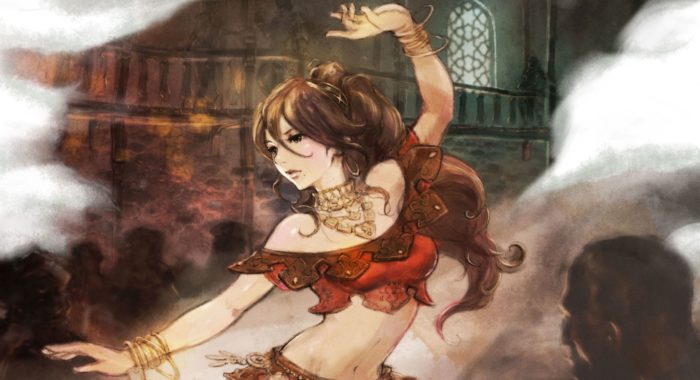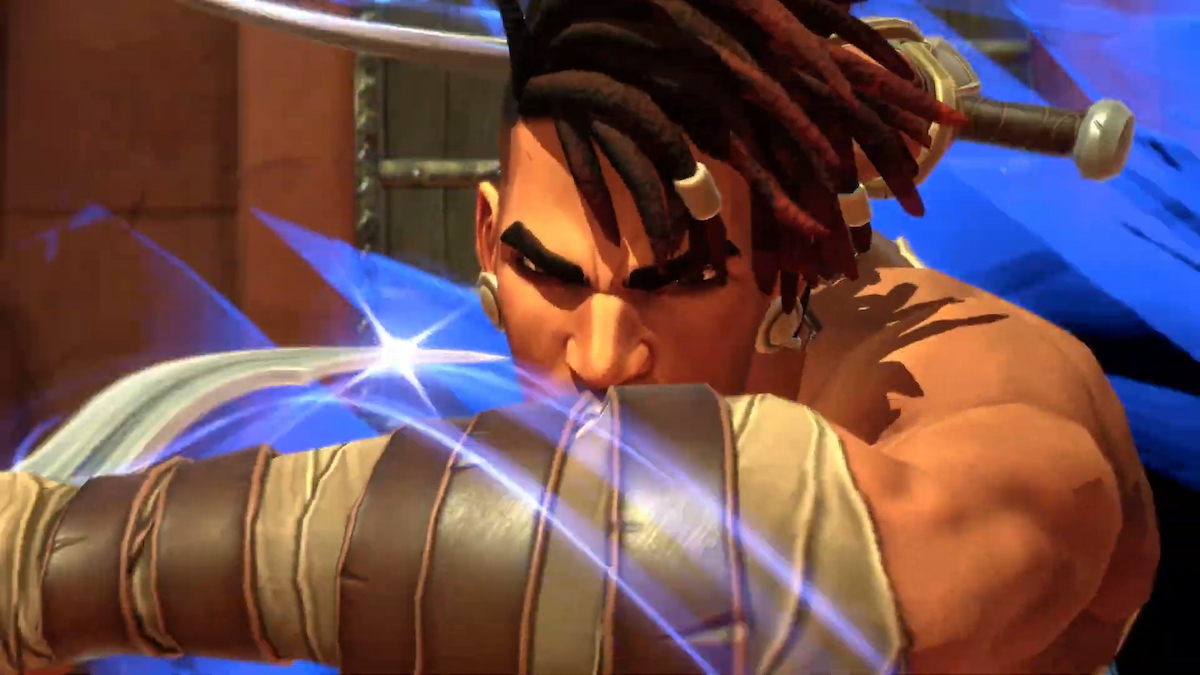If you’re a fan of JRPGs with classic turn-based combat, you’re most probably going to enjoy Octopath Traveler very much, and you should buy it.
I’ve had the game for a little over a week now, and it’s safe to say that I haven’t been this enthralled and enamored with a JRPG for quite some time. For the past week, I’ve spent every waking hour either thinking about the game, planning my party composition with a spreadsheet, talking about it to anyone who will listen, or just playing more of it. It’s that good.
If you’ve played any of the two demos released on the eShop, you’ve already got a good idea of what Octopath Traveler is like. Battles play out as turn-based affairs, but with a slightly modern twist introduced with the boost system. Similar to the brave and default mechanics in Bravely Default, your characters can save up Boost Points (BP) each turn, then expend them to unleash a powerful attack. So, you could attack normally for a couple of turns and save up BP during that time, and then use up all your BP to execute multiple melee attacks or a single devastating magical blow. If you hit an opponent’s weak point (it could be a weapon type or magical element), you’ll deal shield damage. Once you break their shield, they’ll be stunned, and this will give you an extra turn to work with.
Understanding how the boost system works is the key to winning battles in Octopath Traveler. Once you’ve identified an enemy’s weak point, you can choose to either spend all your BP to break the shield immediately, or you could just bide your time and take down the shield slowly, then boost your attacks when the shield is broken for extra critical damage. It’s not always wise to spend all your BP on a quick shield break, as you never know when your enemies might charge up for a powerful attack, and you’ll start wishing you had saved your BP for this emergency shield break instead.
At the time of writing, I’ve just hit the 50-hour mark in Octopath Traveler, and I can safely say that no other turn-based RPG in recent memory has challenged me quite like this one. Dungeons are mostly kept pretty short, though I noticed that they got progressively longer and more elaborate as I got into the higher level content. Most enemy encounters have the potential to cause a party wipe, at least until you start figuring out enemy formations and weaknesses, then developing a strategy to deal with them one by one, or all at once if your party has the means to do so. To my surprise, regular battles could take up quite a bit of time as well, with the longest one taking me about seven or eight minutes to complete. The enemies in Octopath Traveler are tough, but the combat can be so satisfying once you come up with a strategy loop for every turn to slowly eliminate your opposition.

Unlike most traditional JRPGs, I found the resource management aspect to be pretty lenient in this one. Perhaps because battles can go on for so long, Square Enix opted to keep the dungeons short and make it easier for players to replenish health and SP in between encounters. It might not be for everyone, but I found it much more satisfying to be challenged by the game’s combat itself rather than the impending stress of running out of healing items in a dungeon. I’m not ashamed to say that I’ve suffered a handful of party wipes in regular battles – something which rarely ever happens to me in games like these.
It’s a good thing, too, especially considering how brutal Octopath Traveler’s bosses can be. While the chapter 1 bosses did require some level of strategy, they never made me feel like my party was in any real danger of getting wiped out. That all changes once you start tackling the chapter 2 content. I can’t reveal any details here, but I will say that almost every single boss encounter has been extremely close. There’s a level recommendation for each quest, and even with a couple of slightly over-leveled characters and two other allies that were at the recommended level, I was never overpowered. On the contrary, I felt like I only ever got through those battles by the skin of my teeth.
Octopath Traveler’s eight characters all come with a base class, but once you hit chapter 2, you start unlocking secondary classes which will really help to add more diversity to your compositions. At this point, it’s not just about using the boost system to win; it’s also about making sure you have a well-balanced party composition that can handle anything that comes your way. Thankfully, the game lets you switch out your secondary classes anytime you want, and experimenting with various characters and combinations has been half the fun.
The other half comes from the story stuff. Aside from pursuing the eight different main story arcs, there are plenty of side quests to take on as well, and some of these are way more fleshed out than you might expect. One particular quest line spans across three different cities in Orsterra, where my party was tasked with finding out what happened to a particular NPC’s father. Other quests are more simple, and only require you to beat up an NPC or two, or guide a lost grandfather back to his hometown. Some even task you with venturing into optional caverns to take on mini bosses, which are also very tough. Octopath Traveler’s towns are plentiful, and many of them are sprawling, all littered with NPCs that have interesting backstories. The world has been an absolute joy to explore so far, and I haven’t even finished unlocking the full map.
As for the eight main characters, I’ve developed a very keen sense of attachment to each of them. While their stories haven’t been as interconnected as I’d hoped (though this might still change later on), they all come with their own endearing quirks that really make them stand out, and I’m thoroughly excited to see their arcs through to the end. I’ll have more to say about the game in our full review going up next week, once I’ve actually beaten the whole thing.
For now, though, I imagine that any turn-based RPG fan will be extremely pleased with what Square Enix has done with Octopath Traveler. Now back to Orsterra.





Published: Jul 6, 2018 09:01 am